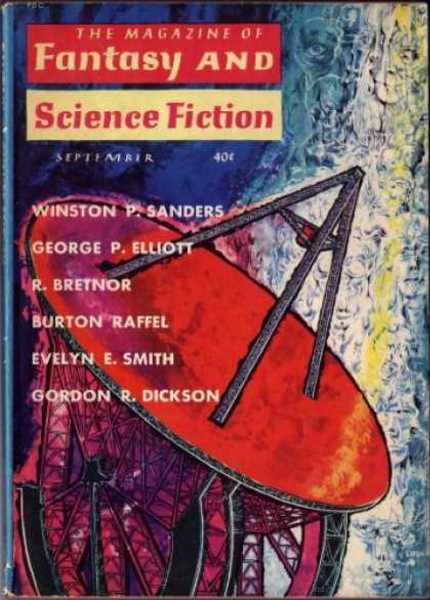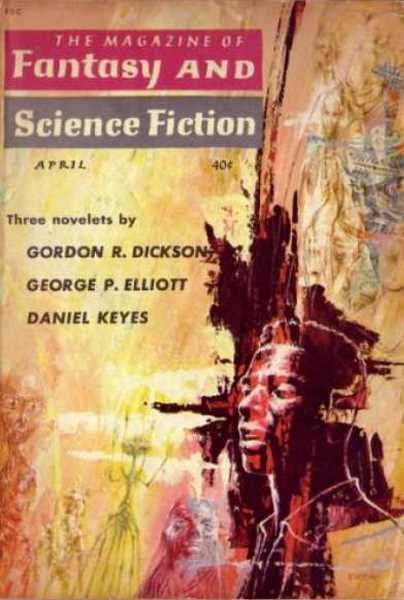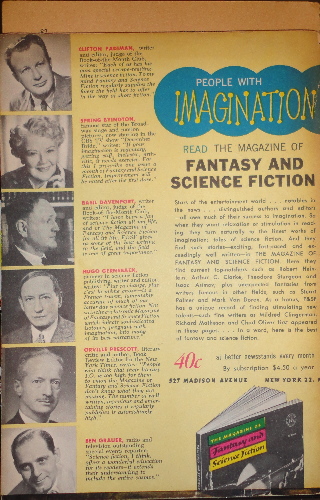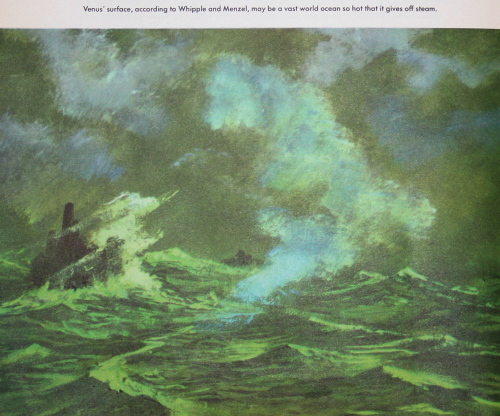
by Gideon Marcus

Have you ever ordered your favorite dessert only to find it just doesn't satisfy like it used to? I'm a big fan of crème brûlée, and I used to get it every chance I could. That crispy carmelized top and that warm custard bottom, paired with a steaming cup of coffee…mmm.
These days, however, crème brûlée just hasn't done it for me. The portions are too small, or they serve the custard cold. The flavor doesn't seem as bold, the crust as crispy. I've started giving dessert menus a serious peruse. Maybe I want pie this time, or perhaps a slice of cake.
Among my subscription of monthly sf digests, The Magazine of Fantasy and Science Fiction used to be my dessert — saved for last and savored. These days, its quality has declined some, and though tradition will keep it at the end of my review line-up, I don't look forward to reading the mag as much as once I did. This month's, the November 1961 issue, is a typical example of the new normal for F&SF:

Keith Laumer is an exciting newish author whose work I often confuse with Harry Harrison's — probably because Retief reminds me of "Slippery Jim" diGriz. Laumer has a knack for creating interesting sentient non-humans. He gave us intelligent robot tanks in Combat Unit, and this month, he gives us sentient, symbiotic trees in Hybrid. It's a story that teeters on the edge of greatness, but its brevity and rather unpleasant ending drag it from four to three stars.
The Other End of the Line is the first new story from Walter Tevis in three years. Ever wonder what happens if you break a bootstrap paradox (i.e. one where your future self gives your present self a leg up)? Well…it's not a good idea. Cute stuff. Three stars.
Rick Rubin is back with his second story, the first being his excellent F&SF-published Final Muster. The Interplanetary Cat is a weird little fantasy involving an incorrigible feline with an insatiable appetite. It's almost Lafferty-esque, which means some will love it, and some will hate it. I'm in the middle. Three stars.
Faq' is the latest by George P. Elliott, whose Among the Dangs was a minor masterpiece. Elliott's new story is in the same vein — a Westerner who finds a fictional yet plausible tribe of people, alien from any we currently know. It's got a nice, dreamy style to it, but it lacks the depth or the powerful conclusion of Dangs. Three stars.
Doris Pitkin Buck is another F&SF new author. Green Sunrise, like Buck's last work (Birth of a Gardner), Sunrise features a lovers' squabble between a scientist man and a non-scientist woman. Once again, the language is evocative, but the plot is weak, the impression fleeting. Two stars.
The Tunnel Ahead is an overpopulation dystopia-by-numbers tale by Alice Glaser. Cramped living conditions? Check. Algae-based food products? Check. Drastic, random population reduction methods? Check. Two stars? Check.
Randy Garrett's been skulking around F&SF lately, but I don't know that it has been to the magazine's benefit. Mustang is essentially Kit Reed's Piggy, but not as good. Two stars.
Dethronement is Isaac Asimov's latest article, a sort of screed written in response to a bad review of his Intelligent Man's Guide to Science by biologist Barry Commoner. The latter objected to the former's obliteration of the line between non-living and living matter. This, Commoner maintained, destroyed the field of biology entirely. The Good Doctor explains that finding bridges between disciplines does not destroy the disciplines any more than bridging Manhattan with the other four burroughs of New York makes Manhattan no longer an island. It's a good piece. Four stars.
Alfred Bester covers Heinlein's Stranger in a Strange Land in his books column. He didn't like it either.
John Updike has a bit of doggerel about scandalous neutrinos called Cosmic Gall. It is followed by Algis Budrys' rather impenetrable article on science fiction, About Something Truly Wonderful. Both rate two stars.
Part 2 of Gordy Dickson's Naked to the Stars rounds out the otherwise lackluster issue. It deserves its own article, but you're going to have to wait for it, since Rosemary Benton and Ashley Pollard will be covering some exciting scientific developments, first. I'll give you a hint — they involve the biggest rocket and the biggest boom.














